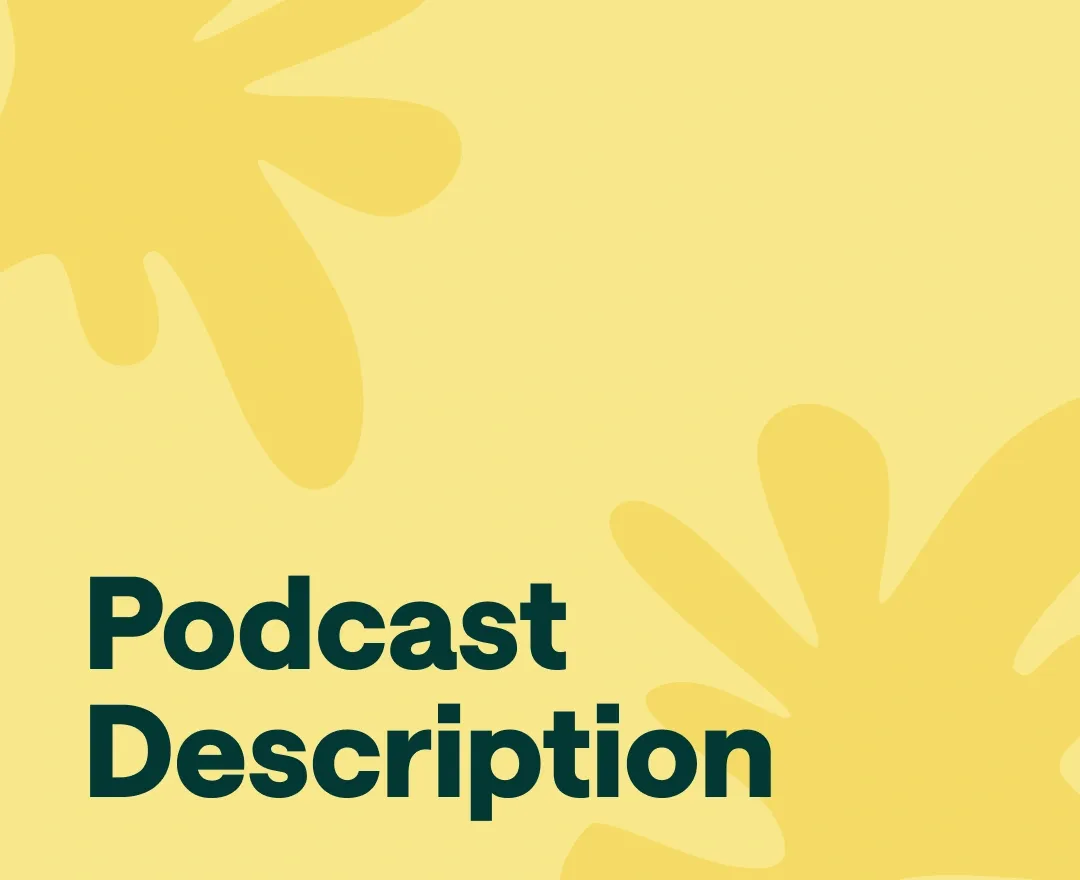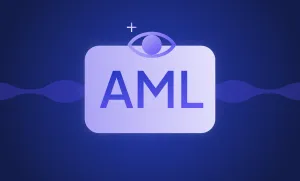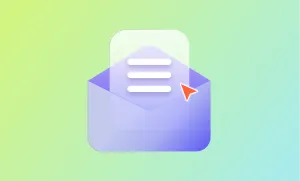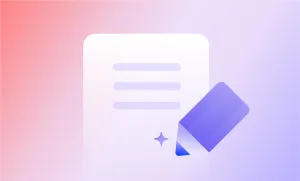If you're new to podcasting, one of the first things you need to do is write a podcast description. This text will appear on your podcast's page in directories like Apple Podcasts and Spotify, and it's your chance to tell potential listeners what your show is about.
Writing a good podcast description can be tricky, but it's essential to get it right. An excellent description will let listeners know what they can expect from your podcast, and convince them to hit the "subscribe" button.
To help you write a winning podcast description, we've put together a cohesive blueprint with podcast description examples. Use these as inspiration for your own podcast description, and you'll be well on your way to podcasting success!
How to Write a Podcast Description
Here's how to get started with writing a great podcast description:
1) Introduce Yourself (The Hosts)
If this is your first podcast, you'll want to introduce yourself (and any hosts and co-hosts) in your description. This is a great way to give potential listeners a sense of who you are and what they can expect from your show.
For example, the podcast Serial begins its description with a brief introduction to the hosts:
"Serial is a podcast from Serial Productions, a New York Times company, hosted by Sarah Koenig. Serial unfolds one story - a true story - over the course of an entire season. The show follows the plot and characters wherever they lead, through many surprising twists and turns..."
If you're unsure how to introduce yourself, start by writing a brief bio outlining your experience and expertise. You can also mention any previous podcast episodes you've done or other projects you've worked on that might be relevant to your new show.
2) Introduce What Listeners Should Expect
Let your listeners know what they can expect from each episode. This way, they'll know exactly what they're getting into before they hit the "play" button.
For example, the podcast Science Vs communicates what the podcast is about and what listeners can expect:
"There are a lot of fads, blogs and strong opinions, but then there's SCIENCE. Science Vs is the show from Gimlet that finds out what's fact, what's not, and what's somewhere in between. We do the hard work of sifting through all the science so you don't have to and cover everything from 5G and Pandemics, to Vaping and Fasting Diets."
3) Keep Consistency in Mind
When writing your podcast description, it's important to keep consistency in mind. Your podcast description should accurately reflect the content of your show, so be sure to avoid making false promises or exaggerating what your podcast is about.
For example, if your podcast is primarily light-hearted and fun, but you write a description that makes it sound like a hard-hitting news show, potential listeners will be disappointed when they tune in. On the other hand, if you downplay the content of your show and make it sound uninteresting, people may not give it a chance even if it's excellent.
It can be helpful to read over your podcast description after you write it and ask yourself whether or not it accurately reflects the tone and content of your podcast. If not, make some changes until you're happy with what you've got.
4) Use Keywords and Phrases
As we mentioned, it's essential to use relevant keywords and phrases in your podcast description so potential listeners can find your show. But how do you know which keywords to use?
Start by brainstorming a list of words and phrases that describe your podcast. These could be general terms like "comedy podcast" or more specific phrases like "interview podcast about online dating."
Once you've settled on the right keywords, use them throughout your podcast description. Remember to use them in a way that sounds natural, rather than forcing them in where they don't fit. If done right, using keywords can help your podcast stand out and attract new listeners.
5) Make it Short and Sweet
Your podcast description doesn't need to be long or overly complicated - in fact, it's often better if it isn't. Keep your description clear and to the point, and don't try to cram too much information into a few sentences.
For example, the podcast 99% Invisible keeps its description short and sweet:
"Design is everywhere in our lives, perhaps most importantly in the places where we've just stopped noticing. 99% Invisible is a weekly exploration of the process and power of design and architecture. From award winning producer Roman Mars. Learn more at 99percentinvisible.org."
This brief description tells listeners everything they need to know about the podcast without too much detail. It also sounds sweet and catchy. As a result, potential listeners can quickly get a sense of what the podcast is about and decide whether or not it's something they're interested in.
6) Include a Call to Action (CTA)
Like the example above, it can be helpful to include a call to action (CTA) in your podcast description. A CTA is a phrase or sentence that tells listeners what you want them to do, such as "Subscribe now," "Visit our website," or "Check us out on Youtube."
Your CTA doesn't necessarily have to be a sales pitch - it can be as simple as telling listeners to subscribe to your podcast, so they don't miss an episode. Including a CTA in your podcast description can help encourage people to take the next step, whether subscribing to your podcast, visiting your website, or following you on social media.
7) Refrain From Using Clickbait
While making your podcast description catchy is important, you should avoid clickbaiting potential listeners. Clickbait is when someone uses a sensationalized or misleading headline to get people to click on a link (or whatever the subject matter is) without actually delivering on the promise made in the headline.
For example, a podcast about baking might have a description that reads, "You won't believe what these bakers do with a simple cake recipe!" while the actual podcast episode is simply a discussion of different cake recipes. This would be considered clickbait, and it's annoying for listeners.
What is a Podcast Description?
A podcast description is a brief summary of your show that appears in podcast directories. Think of it as your podcast's "elevator pitch." It should be concise, engaging and informative, giving listeners a good sense of what your podcast is all about. Your podcast description is one of the most crucial texts associated with your show, so it's worth taking the time to write a good one. It is usually confused with podcast show notes, which are closer to blog posts or transcripts for each episode. Both are important, but the podcast description is what appears in directories and helps new listeners decide whether or not to give your show a try.
Why it is Important to Have a Great Podcast Description
Podcast descriptions are important because they help potential listeners discover your show.
Think about it this way: when scrolling through a podcast directory like Apple Podcasts, you're likely to see dozens, if not hundreds, of different shows. How do you decide which ones to listen to?
For many people, the podcast description is the deciding factor. If a show's description sounds exciting and relevant to their interests, they're more likely to try it. On the other hand, if a show's description is confusing or doesn't give a clear sense of what the podcast is about, listeners are likely to move on to something else.
In other words, your podcast description is your best chance to make a good first impression on potential listeners. If you can write a description that accurately reflects your show and makes it sound appealing, you're much more likely to attract new listeners and grow your audience.
What Makes a Podcast Description Good?
So, what makes a good podcast description? A great podcast description should be:
- 1) Clear and concise: podcast descriptions should be short and to the point. Ideally, you'll want to keep your description under 200 words, but it's not a strict rule. Most importantly, you must ensure your potential listeners have a good idea of your podcast. Be sure to include information about the topics you cover, the format of your show, and anything else potential listeners may want to know.
- 2) Engaging: your podcast description should be written in an engaging, easy-to-read style. Avoid using jargon or overly technical language, and focus on making your description sound interesting.
- 3) Searchable: podcast descriptions should include relevant keywords and phrases that potential listeners would use when searching for a podcast like yours. This will help ensure your podcast comes up in search results and makes it more likely for new listeners to find you.
- 4) Convincing: your podcast description should be compelling enough to make listeners want to hit the "subscribe" button. Be sure to highlight the things that make your podcast unique, and explain why people should listen.
Closing Points
Podcast descriptions are important, but they don't have to be complicated. Just remember to keep it short and sweet, use keywords throughout, include a call to action, and refrain from using clickbait. With these tips in mind, you'll be well on your way to writing an effective podcast description that will help potential listeners find your show.
Hopefully, these podcast description examples inspired you to create one for your show. If you need help with podcast recording and editing, be sure to try out Podcastle for free. With the power of AI, the easy-to-use features and tools will help you throughout every stage of podcast content creation, whether in audio or video formats. From background noise removal to cloning your own voice, you're sure to streamline your work process massively.








